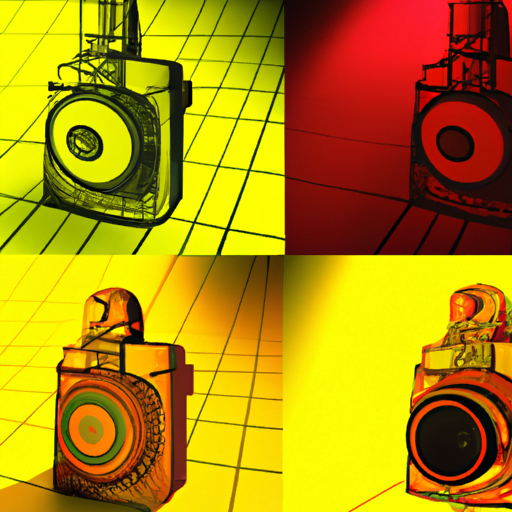
-
Table of Contents
The Influence of Sci-Fi Art on Modern Visuals

Science fiction (sci-fi) art has had a profound impact on modern visuals, shaping the way we perceive and create art in various mediums. From movies and video games to architecture and fashion, the influence of sci-fi art can be seen everywhere. This article explores the evolution of sci-fi art and its significant contributions to modern visual culture.
The Origins of Sci-Fi Art
Sci-fi art emerged in the late 19th and early 20th centuries, coinciding with the rise of science fiction literature. Artists like Jules Verne and H.G. Wells captivated audiences with their imaginative stories, inspiring artists to visualize these otherworldly concepts. The first notable sci-fi art movement was the “pulp era” in the 1920s and 1930s, characterized by vibrant and often exaggerated illustrations featured in pulp magazines.
One of the most influential sci-fi artists of this era was Frank R. Paul, known as the “Father of Science Fiction Illustration.” Paul’s futuristic and detailed illustrations set the standard for sci-fi art, depicting advanced technology, alien landscapes, and fantastical creatures. His work laid the foundation for the visual language of sci-fi art that continues to influence artists today.
The Impact on Film and Television
Sci-fi art has played a crucial role in shaping the visual aesthetics of films and television shows. From the iconic designs of spaceships in “Star Wars” to the dystopian cityscapes of “Blade Runner,” sci-fi art has provided filmmakers with a visual blueprint for creating immersive and believable worlds.
One notable example is the work of concept artist Syd Mead, who contributed to the visual development of films like “Aliens” and “Tron.” Mead’s futuristic designs and attention to detail have become synonymous with the sci-fi genre. His work not only influenced the visual effects industry but also inspired real-world designs, such as the iconic look of the DeLorean in “Back to the Future.”
The Influence on Video Games
Sci-fi art has had a significant impact on the world of video games, shaping the visual style and narrative of many popular titles. Games like “Halo,” “Mass Effect,” and “Deus Ex” feature futuristic settings, advanced technology, and alien species, all heavily influenced by sci-fi art.
The concept art created for video games often serves as a starting point for the development of the game’s visuals. Artists like Ralph McQuarrie, known for his work on the “Star Wars” franchise, have contributed to the creation of iconic characters and environments that have become synonymous with the sci-fi genre.
The Influence on Architecture and Design
Sci-fi art has also influenced the field of architecture and design, pushing the boundaries of what is considered possible. Architects and designers often draw inspiration from sci-fi art to create futuristic and innovative structures.
One example is the work of Zaha Hadid, an acclaimed architect known for her avant-garde designs. Hadid’s buildings often feature organic and futuristic shapes, reminiscent of the alien landscapes depicted in sci-fi art. Her work demonstrates how sci-fi art can inspire real-world architectural designs that challenge traditional notions of form and function.
The Influence on Fashion
Sci-fi art has made its mark on the world of fashion, inspiring designers to create avant-garde and futuristic clothing. The use of metallic fabrics, unconventional silhouettes, and futuristic accessories can all be traced back to the influence of sci-fi art.
Designers like Thierry Mugler and Alexander McQueen have incorporated sci-fi elements into their collections, blurring the line between fashion and fantasy. Their creations often feature exaggerated proportions, unconventional materials, and futuristic motifs, reflecting the influence of sci-fi art on their design aesthetic.
The Future of Sci-Fi Art
As technology continues to advance, so does the potential for sci-fi art to evolve and inspire new forms of visual expression. Virtual reality (VR) and augmented reality (AR) are opening up new possibilities for artists to create immersive sci-fi experiences.
Artists and designers are also exploring the intersection of sci-fi art and sustainability, envisioning a future where technology and nature coexist harmoniously. This emerging trend, known as “eco-sci-fi,” aims to inspire solutions to environmental challenges through imaginative and visually compelling art.
Conclusion
Sci-fi art has had a profound influence on modern visuals, shaping the way we perceive and create art in various mediums. From film and video games to architecture and fashion, the impact of sci-fi art can be seen in every corner of visual culture.
By visualizing fantastical concepts and pushing the boundaries of what is possible, sci-fi art has inspired generations of artists and designers to think beyond the constraints of reality. It continues to fuel our imagination and challenge our perception of the world, making it an enduring and influential genre in the realm of visual arts.
